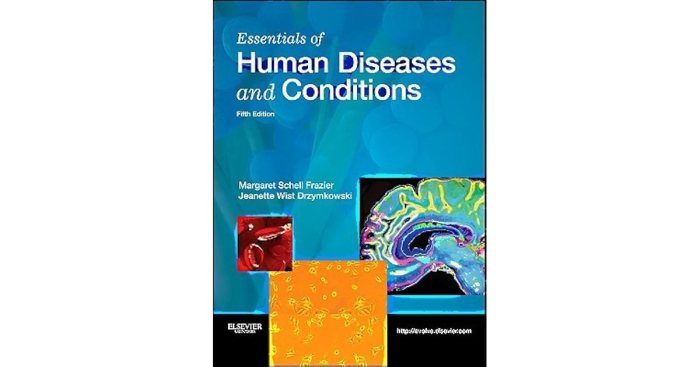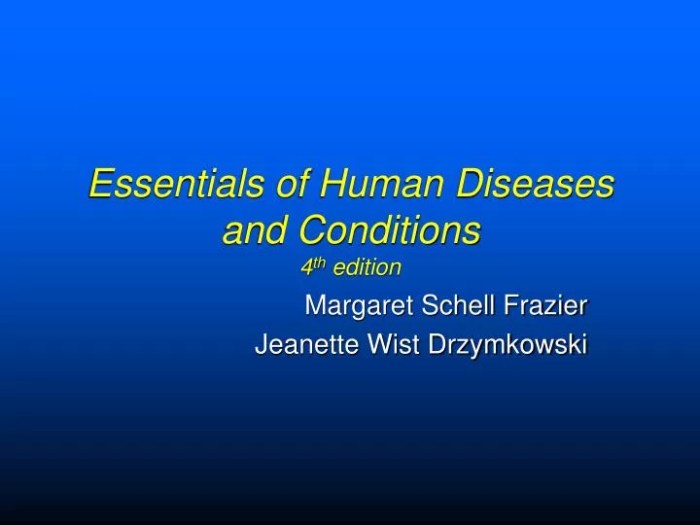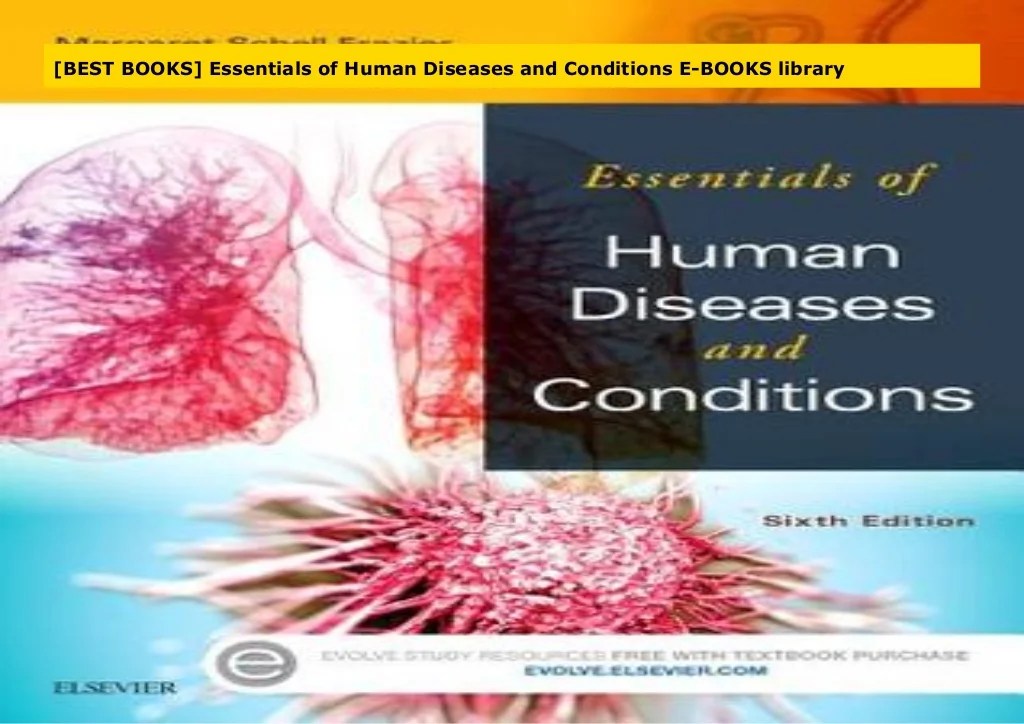Essentials of human diseases and conditions 7th edition pdf – Welcome to the definitive guide to human diseases and conditions, now in its fully updated and revised 7th edition. This comprehensive resource provides an in-depth exploration of the causes, symptoms, diagnosis, treatment, and prevention of a wide range of health conditions, empowering individuals to take an active role in their own health and well-being.
With a focus on evidence-based medicine and the latest advancements in healthcare, this book is an indispensable resource for medical students, healthcare professionals, and anyone seeking a deeper understanding of human health and disease.
Overview of Human Diseases and Conditions
Human diseases and conditions are a major public health concern, affecting individuals and societies worldwide. The field of medicine focuses on understanding, diagnosing, treating, and preventing these ailments.
Diseases and conditions can be classified into various types, including infectious diseases, chronic diseases, genetic disorders, and mental health conditions. They can range from common illnesses to rare and debilitating conditions.
The impact of diseases and conditions on individuals is profound, affecting their physical, mental, and emotional well-being. They can lead to pain, disability, reduced quality of life, and even death. Societally, diseases and conditions can strain healthcare systems, reduce productivity, and contribute to economic burdens.
Causes and Risk Factors of Diseases and Conditions

The causes of diseases and conditions are complex and multifaceted, involving a combination of genetic, environmental, and lifestyle factors.
- Genetic factors:Inherited genetic mutations or variations can predispose individuals to certain diseases, such as sickle cell anemia or cystic fibrosis.
- Environmental factors:Exposure to environmental toxins, pollutants, or infectious agents can contribute to the development of diseases, such as cancer, respiratory conditions, or infections.
- Lifestyle factors:Unhealthy habits, such as smoking, excessive alcohol consumption, and poor diet, can increase the risk of developing chronic diseases like heart disease, stroke, and type 2 diabetes.
Understanding risk factors is crucial for disease prevention. Modifying lifestyle behaviors, reducing environmental exposures, and undergoing genetic testing can help reduce the risk of developing certain diseases.
Symptoms and Diagnosis of Diseases and Conditions

Symptoms are the subjective experiences reported by individuals, such as pain, fatigue, or shortness of breath, while signs are objective findings observed by healthcare professionals, such as fever or skin rashes.
Accurate diagnosis is essential for appropriate treatment. Diagnostic procedures include:
- Physical examination:A physical exam can provide valuable clues about a patient’s condition.
- Laboratory tests:Blood tests, urine analysis, and other laboratory tests can detect abnormalities that indicate specific diseases.
- Imaging tests:X-rays, CT scans, and MRIs can visualize internal structures and identify abnormalities.
- Biopsy:Removing a small tissue sample for examination under a microscope can confirm a diagnosis.
Early diagnosis and prompt treatment are crucial for improving outcomes and preventing complications.
Treatment and Management of Diseases and Conditions: Essentials Of Human Diseases And Conditions 7th Edition Pdf

Treatment options vary depending on the specific disease or condition. They may include:
- Medication:Prescription drugs can treat symptoms, control disease progression, or cure infections.
- Surgery:Surgical procedures can remove tumors, repair damaged tissues, or correct anatomical abnormalities.
- Lifestyle changes:Modifying diet, exercise, and other lifestyle habits can improve outcomes for chronic diseases.
- Rehabilitation:Physical therapy, occupational therapy, and speech therapy can help individuals regain function after an injury or illness.
Disease management involves a collaborative effort between healthcare professionals and patients. Patient education and self-management are essential for successful outcomes.
Prevention of Diseases and Conditions

Prevention is a key strategy in public health. Modifiable risk factors, such as smoking, poor diet, and physical inactivity, can be targeted through:
- Public health measures:Immunization programs, screening tests, and health education campaigns can prevent or detect diseases early.
- Lifestyle modifications:Encouraging healthy behaviors, such as regular exercise, a balanced diet, and avoiding tobacco, can reduce the risk of chronic diseases.
Successful prevention programs have significantly reduced the burden of diseases like polio, measles, and heart disease.
FAQs
What is the scope of this book?
This book covers a comprehensive range of human diseases and conditions, from common ailments to complex chronic illnesses.
How is the book organized?
The book is organized into nine chapters, each focusing on a specific aspect of human health and disease, including causes, symptoms, diagnosis, treatment, and prevention.
What are the key features of the 7th edition?
The 7th edition includes updated content, new case studies, and the latest advancements in medical research and treatment.